Picture this: a dimly lit stage, the electrifying anticipation in the air, and from the shadows emerges an unmistakable silhouette gripping a bass guitar that defies conventional design. As Gene Simmons takes command, every note from his iconic instrument tells a story of rebellion and reinvention that has captivated audiences for decades. But what is it about Simmons’ choice of bass guitars that sets him apart? Is it the aggressive styling, the innovative craftsmanship, or something more elusive that’s propelled him to the forefront of musical history?
With over two decades as a music journalist, my admiration for Gene Simmons and his remarkable contributions to bass playing has only deepened. His unique style resonates with my belief that the bassist is the backbone of any band. Join me for an in-depth exploration of the legendary instruments—the AXE and the Punisher—that have become synonymous with Simmons and the proof points that define their distinct place in the world of rock music.
Who is Gene Simmons?

Throughout my career, covering legends like Gene Simmons has been a highlight. His journey with KISS not only changed the face of rock but also offered invaluable lessons on branding and performance. But who is Gene Simmons, really? This question goes beyond his characteristic face paint and iconic bass guitars, delving into a rich tapestry of music and visionary showmanship. A founding member of the legendary rock band KISS, Gene Simmons, born Chaim Witz, transformed from a Hungarian immigrant to one of the most recognized figures in music history.
Did you know that Gene Simmons’ persona has become a template for rock stardom that many aspire to? This transformation didn’t happen overnight. With his demon-like makeup and fire-breathing antics, Simmons crafted a mythos around his stage presence. These theatrics paired with his driving bass lines secured KISS not just as musicians but as icons. As I reflect on his tenure with KISS, it’s clear his impact extends well beyond music to encompass a blueprint of fame where personality fuels artistry.
Among the famous bass guitarists, Simmons stands out for his unique approach to branding. His bass guitars, in particular, have become symbolic of his larger-than-life persona. Such was his influence that these instruments — the AXE Bass and the Punisher Bass — are further explored in this guide. His musical journey and artistic endeavors continue to resonate through generations, embodying a legacy that is both innovative and timeless.
What is the AXE Bass?
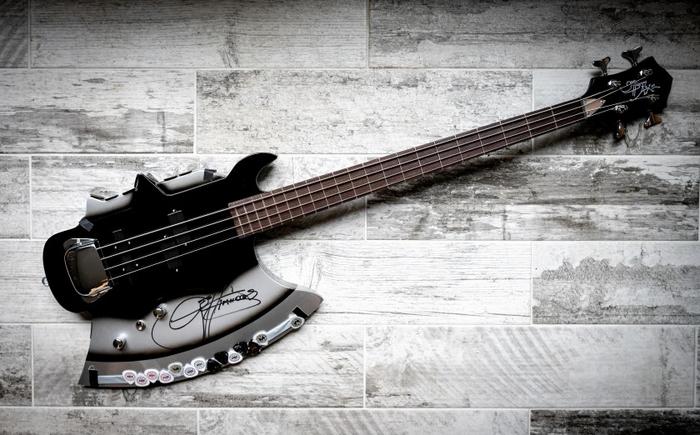
Having reviewed countless instruments, I can say that the AXE Bass is as much a piece of art as it is a tool for performance. With its striking design resembling a battle axe, this bass is unmistakably the embodiment of Gene Simmons’ larger-than-life persona. Crafted for both aesthetic allure and powerful function, the AXE Bass pushes the boundaries of what a bass guitar can be. It’s not just another instrument; it’s a declaration of rock and roll bravado.
Why has the AXE Bass become a sought-after instrument among players and collectors alike? Simply put, it combines unique visual appeal with high-quality craftsmanship. As the model often touted as the best Gene Simmons bass guitar, it appeals to both the eyes and the ears, setting itself apart in the world of music equipment. The AXE Bass captivates with its iconic silhouette, housing pickups that deliver the thunderous, rich tones Simmons is known for. This is no collector’s piece to be admired from afar—it’s built to withstand the rigors of live performance.
Exploring the depths of the AXE Bass, one sees how seamlessly design and functionality can coexist, underscoring why it is a prized treasure for those lucky enough to wield it. My experience with this bass has shown me how Simmons’ signature model reflects his influential style, leaving an indelible mark on the landscape of rock music performance and collection alike.
What is the Punisher Bass?
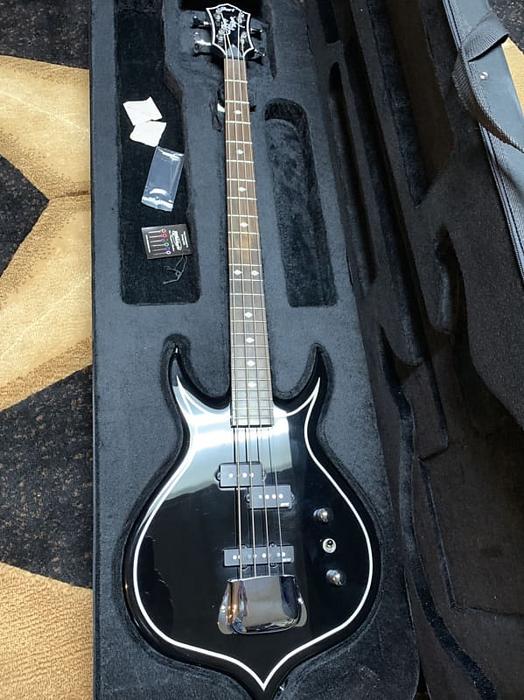
As someone who’s seen thousands of bass guitars, the Punisher Bass stands out for its edgy design and sound. It’s a testament to how an instrument can reflect the artist’s persona. When I first laid eyes on Gene Simmons’ Punisher Bass, its aggressive silhouette immediately resonated with me. It’s more than just a guitar; it embodies the spirit of rock with its bold aesthetic and formidable presence. But what unique features make the Punisher Bass a top choice for rock musicians? This question often crosses my mind whenever I pick up this iconic instrument.
Delving into the Gene Simmons bass specifications, I noticed the Punisher’s unique combination of sleek contours and heavy-duty construction, distinguishing it from others available at Guitar Center. Its massive body provides not only an arresting visual appeal but also a rich, thunderous tone that can cut through any mix. The dual humbucker pickups are perfectly poised to deliver the powerful, growling sound that has become synonymous with Simmons’ stage presence. Additionally, the precise craftsmanship involved in its build ensures reliability and longevity—crucial factors for touring musicians who demand the best from their gear.
In many ways, the Punisher Bass is a mirror of Simmons’ own bold and elaborate onstage persona, making it a prime tool for artists who aim to capture audiences with both sound and imagery. Its distinct character isn’t just an extension of Gene Simmons’ musical legacy; it’s a compelling choice for any rock musician aspiring to make a statement.
Comparing Bass Models
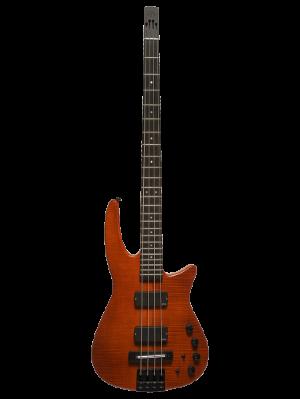
Can the choice of bass really transform a musician’s sound and style on stage? In my years of evaluating gear, one lesson stands clear: the right bass can elevate a performance. This becomes especially apparent when comparing different models of Gene Simmons’ iconic bass guitars. Having delved into the soundscapes and performances of myriad bassists, I’ve found that each model Simmons has wielded brings something unique to the table, each with its own appeal to different players.
The Gibson bass models, for instance, are renowned for their deep, resonant sound and robust craftsmanship. It’s these qualities that make the Gibson bass a staple in rock music, and for Gene Simmons, it’s been a reliable tool for many electrifying performances. The body’s solidity coupled with its tonal depth provides a foundation that’s simply unmatched. Many KISS fans—and bass enthusiasts—often argue that a Gibson bass is indeed the best Gene Simmons bass guitar, owing not only to its sound but also to its classic rock visual appeal.
Yet, the exploration doesn’t end there. Items like the *Punisher Bass* introduce a different palette of sound entirely, with a tone and aesthetic that resonate with a different aspect of Simmons’ persona. The sharper edges and distinctive design of the Punisher Bass alter the dynamic on stage, offering players rugged versatility suited for transforming performance style. For those venturing into the realm of guitar shopping with a focus on showmanship, these choices are pivotal.
Ultimately, the choice of bass goes beyond technical specifications; it’s about the persona it helps project and the unique sound it cultivates. As I continue to explore and compare, it’s evident Gene Simmons’ bass guitars aren’t just instruments—they’re extensions of identity, each with a story and a style waiting to be harnessed on stage.
How Has Gene Simmons Influenced Bass Playing?
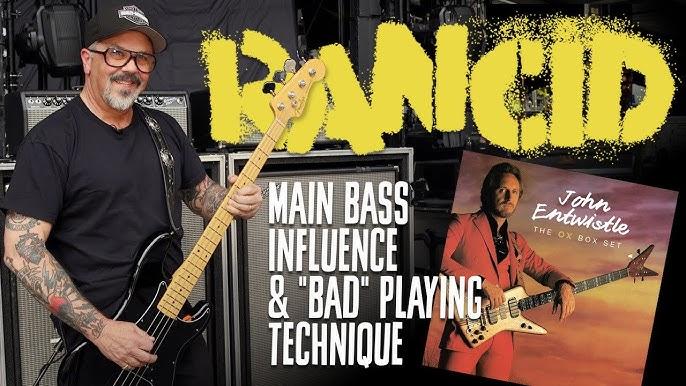
Reflecting on Gene Simmons’ influence in the realm of bass playing, I’m struck by how he has consistently stood out not just as a performer, but as a visionary. As a bass player myself, I see Simmons not merely as a member of KISS but as a pioneer who has redefined the perception and capabilities of the bass guitar in rock music. His signature style, combining an aggressive playing technique with showmanship, has inspired countless musicians, including myself, to embrace bold creativity.
What lasting impact has Gene Simmons had on the art and perception of bass playing across generations? Gene’s distinctive approach to bass playing has transcended the music itself, making the bass guitar a focal point rather than just a supporting instrument. Among famous bass guitarists, Simmons stands out for transforming the role from subtlety to spectacle. He challenged the notion that defined rhythm as the sole domain of the bass, instead advocating for a presence that matches, or even enhances, the lead. His AXE bass guitar not only introduced a departure from conventional designs but became a piece of music memorabilia that fans and aspiring musicians admired.
Incorporating such bold design and play, Simmons has elevated bass player skills by encouraging musicians to explore their instruments visually and audibly. It’s this innovation that reminds me of how evolving one’s artistry can ignite new passions and pursuits. Gene Simmons’ legacy is rooted in encouraging players to push boundaries, ensuring his influence endures well beyond his performances on stage. This impact on generations of musicians is a testament to his role as a revolutionary in the world of bass guitar.
Gene Simmons Bass Guitar Reviews
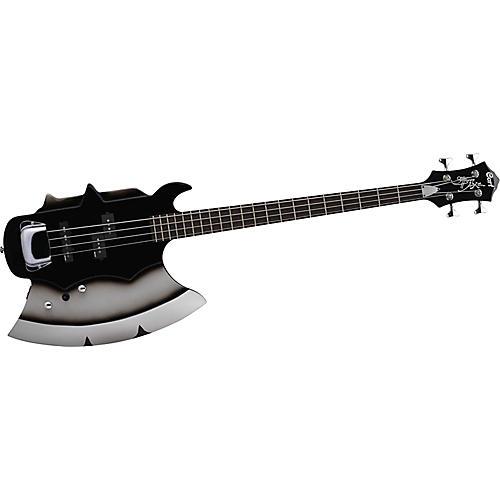
What do musicians really think about the quality and playability of Gene Simmons’ bass guitars? As someone who has spent years analyzing instruments and the nuances that make them special, I find this question deeply intriguing and worth exploring. Reviews of Gene Simmons’ bass guitars reveal a fascinating blend of craftsmanship and signature style, setting his creations apart in the crowded world of music equipment.
Drawing on a repository of reviews from renowned platforms like Equipboard, one begins to appreciate just how much attention to detail goes into each model. Simmons’ bass guitars, particularly his iconic AXE and Punisher designs, stand out not only visually but also in terms of performance. Musicians frequently comment on the robust build quality, noting the seamless integration of aesthetics and functionality—a testament to the brand’s dedication to blending art with precision.
Over years of personal experience and analysis, I’ve found that players consistently highlight the guitars’ remarkable balance and playability. The basses resonate with the theatrics often associated with Simmons, yet they carry a depth and tonal capability akin to the precision required in any demanding performance setting. Owners and enthusiasts alike praise these instruments for their distinctive sound, capturing the true essence of a rock legend’s vision.
My exploration into these reviews reveals that Simmons’ bass guitars command a healthy respect in the community. Yet, they also offer a unique allure for those seeking to capture a slice of rock royalty, without sacrificing quality. It’s a synthesis of style and substance that doesn’t just appeal to the eye but to the very soul of a musician.
FAQs
What makes Gene Simmons’ bass guitar iconic?
What are the distinct features of Gene Simmons’ bass guitar?
Which models of bass guitars has Gene Simmons used?
How did Gene Simmons’ bass guitar influence rock music?
Where can fans learn more about Gene Simmons’ bass guitars?
Conclusion
Concluding my thoughts on Gene Simmons, I am reminded of the indelible mark he has left on the music industry. *How has Gene Simmons not only shaped his band but also impacted the entire landscape of rock music?* Through his work with KISS, Gene has become synonymous with showmanship and unparalleled bass playing techniques. His guitars–the KISS signature *AXE* and *Punisher Bass*–are not merely instruments but powerful symbols of his iconic style and influence.
Gene Simmons’ impact extends beyond his band; he has revolutionized bass playing, inspiring generations of musicians to break boundaries and express themselves fearlessly. This comprehensive guide highlighted how *his choice of bass guitar* is integral to understanding his distinctive sound and stage presence. Over the decades, as I’ve seen in reviews and personal accounts, the *best Gene Simmons bass guitar* continues to be a testament to his mastery and enduring legacy.
His artistic journey has not only shaped KISS but has also created ripples throughout the rock world, leaving a lasting imprint that resonates with both seasoned musicians and aspiring rock stars.

Michael Molenda, the transformative Editor in Chief of Guitar Player magazine from 1997 to 2018, revolutionized its content and expanded its influence. With over 2,500 published works, including in-depth interviews and technical analyses, he’s a giant in guitar journalism. Post-Guitar Player, he launched CONTENT BY MOLENDA and co-founded music websites, bringing his unmatched expertise to the forefront of music marketing. At Fretterverse, Molenda continues to shape the guitar world with insightful commentary and trendsetting journalism.
